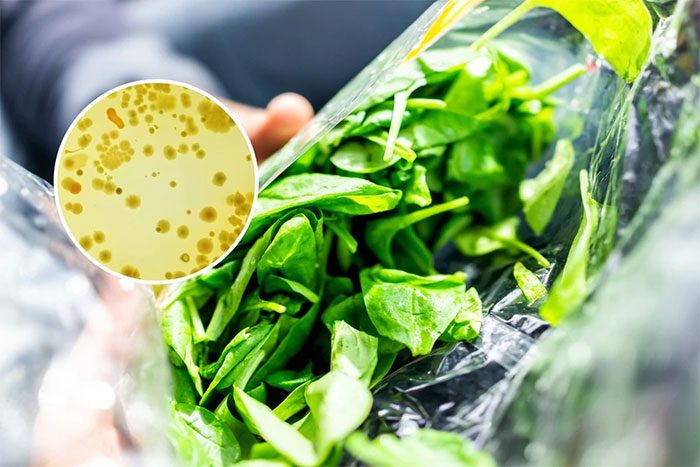A new study reveals that Listeria bacteria often found in food is protected by biofilm-forming microorganisms that are influenced by disinfectants.
The Centers for Disease Control and Prevention (CDC) in the United States states that Listeria is the third leading cause of foodborne illness fatalities in the country, affecting 1,600 people with severe Listeria infections annually and resulting in 260 deaths.
While the illness may be mild, Listeria bacteria can infect parts of the body beyond the intestines, according to Newsweek.

The study indicates that Listeria bacteria in packaged foods can resist disinfectants. (Photo: Newsweek).
Typically, food companies spray disinfectants to combat Listeria. However, research published in the journal Biofilm by scientists at Pennsylvania State University shows that harmless bacterial species present in the packaging environment can adhere to each other, forming a protective biofilm around the Listeria bacteria.
“We found two groups of microorganisms in packaged fruit, Pseudomonadaceae and Xanthomonadaceae, which have excellent biofilm-forming capabilities that protect Listeria bacteria,” said Jasna Kovac, co-author of the study.
“The biofilm acts as a physical barrier that can reduce the effectiveness of disinfectants, and it is hypothesized to enhance the survival of Listeria monocytogenes when disinfectants are applied in processing facilities,” Kovac added.
Thus, Listeria bacteria are protected and only need to absorb a much smaller amount of disinfectant, making them harder to eliminate.
This finding emphasizes the need to evaluate the efficacy of common disinfectants, as microorganisms forming protective layers around bacteria frequently occur in food processing environments.
The CDC recommends that immunocompromised individuals, pregnant women, and those over 65 years old should avoid foods that are highly likely to contain Listeria, such as unpasteurized soft cheeses, deli meats that have not been heated, cut melons left out for more than two hours or stored in the refrigerator for over a week, raw sprouts, or those that have only been briefly blanched.
According to the U.S. Food and Drug Administration (FDA), compared to other foodborne illnesses, listeriosis is rare but very serious.
Even with proper antibiotic treatment, the disease still has a high mortality rate of 20 to 30%. More than 90% of those infected with listeriosis require hospitalization, often in intensive care units.
People can become infected with L. monocytogenes by consuming contaminated food or touching contaminated surfaces and utensils. Infants can be infected if their mothers consume contaminated food during pregnancy.
The bacteria can be found in various types of food, including:
- Raw meat.
- Ready-to-eat processed meats such as sausages and deli meats (both pre-packaged and factory-sealed products sold at deli counters).
- Raw vegetables.
- Frozen pâté.
- Smoked seafood and raw seafood.
- Prepared or preserved salads, including mixed salads and fresh fruit salads.
- Cantaloupe.
- Soft cheeses made from unpasteurized milk.
- Unpasteurized milk and dairy products.
Pasteurization, cooking, and most disinfectants can eliminate this bacteria.




















































